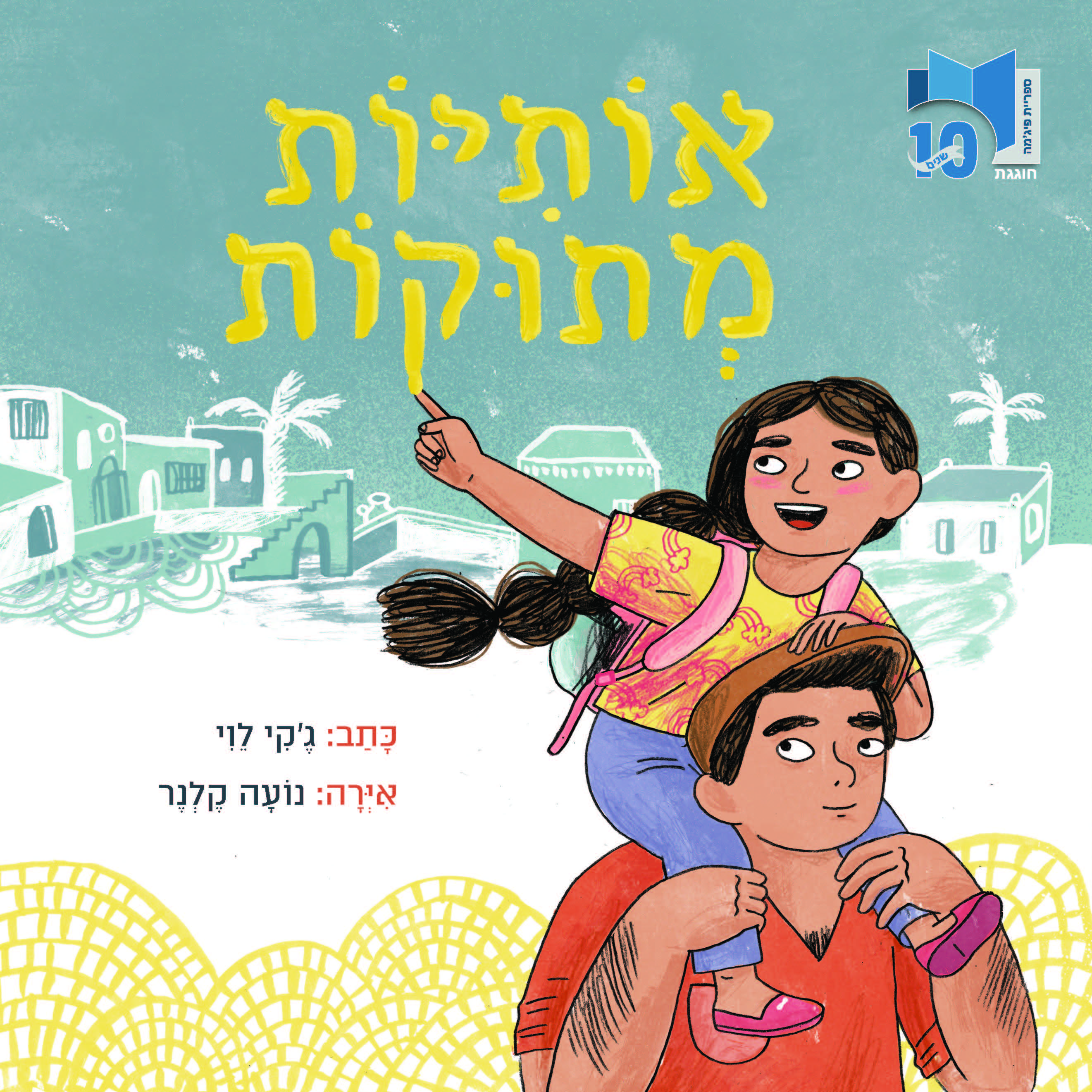
Gal is starting to learn the Aleph Bet, and her father tells her a special story about her grandfather, Raphael, Hebrew letters, and her family’s origins. This is a sweet story about the love of reading passed on from one generation to the next.

Gal is starting to learn the Aleph Bet, and her father tells her a special story about her grandfather, Raphael, Hebrew letters, and her family’s origins. This is a sweet story about the love of reading passed on from one generation to the next.
Sweet Aleph-Bet is a story within a story. It is the tale of Gal and her father, Ruhama the kindergarten teacher, and the children she teaches
Read MoreSweet Aleph-Bet is a story within a story. It is the tale of Gal and her father, Ruhama the kindergarten teacher, and the children she teaches – and also the account of sweet Raphael the Sage, who lived many years ago in a faraway land. The honey-tasting aleph-bet connects the past to the present, Gal and Grandpa Raphael.
Dear Parents,
“A person only learns from a place his heart desires” (Talmud Bavli, Avoda Zara tractate, 19a)
Children’s first encounter with the alphabet is an important milestone in their development, and an indication that they are reaching a degree of maturity. The ability to read and write makes vast worlds accessible to a people, and allows them to acquire knowledge, whilst gaining a better understanding of themselves and their reality.
Throughout the generations, children’s first encounter with the Hebrew alphabet was celebrated in many places. Such festiveness turns learning into a positive and joyful experience to be remembered by children for many a year. Traditions varied depending on communities’ countries of origin, but all sought to emphasize the sweet taste of study.
Сладкие буквы
Автор: Джеки Леви
Иллюстратор: Ноа Кельнер
«Сладкие буквы» – это книга-матрешка. Это история о девочке Галь и ее папе, о воспитательнице Рухаме и друзьях Галь из детского сада, а еще это история о мудреце Рафаэле, который жил в далекой стране много-много лет назад. Медовый вкус букв ивритского алфавита объединяет прошлое и будущее, сближая малышку Галь с дедом Рафаэлем.
Дорогие родители!
«Человек учится лишь, если сердце его жаждет знаний» (Вавилонский Талмуд, Трактат «Авода зара», 19, 71)
Первая встреча детей с буквами алфавита – важнейший этап взросления, перехода в мир взрослых. Навыки чтения и письма открывают перед человеком новые миры, позволяя обогащаться знаниями, анализировать происходящее вокруг, понимать самого себя.
В разных странах на протяжении многих лет формировались церемонии знакомства ребенка с буквами. Праздничная обстановка при первой встрече с алфавитом способствует легкости обучения в дальнейшем, отпечатываясь в детских сердцах на долгие годы. В разных культурах существует множество таких традиций, их объединяет стремление раздразнить у малыша аппетит к сладким плодам знаний.
Читаем и играем дома
«Сладкие буквы» – последняя книга в списке «Пижамной библиотечки» на этот год. Мы надеемся, что вам понравились наши книги и рекомендации и желаем вам отлично провести каникулы, вернувшись с новыми силами в новую группу детского сада или в школу!
Рецепт сладких пряников в форме букв ивритского алфавита
Ингредиенты:
2/3 стакана размягченного сливочного масла
2/3 стакана сахара
1 яйцо
1 чайная ложка ванильного экстракта
2 стакана муки
1 чайная ложка разрыхлителя теста
1/2 стакана соли
Способ приготовления: